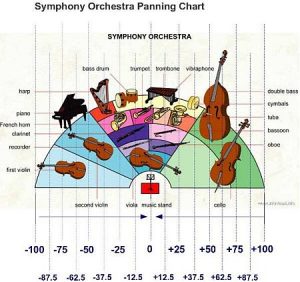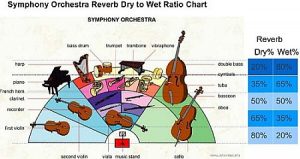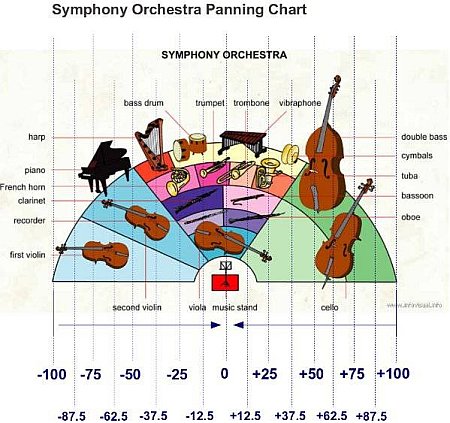Most orchestra music are produced live where actual musicians are playing together and miked all the way to an audio mixer and recording equipment. These live recordings are already pre-adjusted and mixed by an audio mixer in the orchestra before it will be recorded. This is the traditional way of producing orchestra music and it can be expensive since you will be hiring an orchestra to perform the music.
One great alternative is to produce the orchestra music entirely using a music notation software such as Notion 3. Assuming you have great musical skills and you have a complete music sheet of the project, you can actually create a sound recording. Of course since everything is done using a software, you will be needing to assign a reverb and panning settings to the musical instruments in the mix.
This tutorial will help you assign a reverb and panning settings to your software-produced orchestra music. The primary objective is to produce a realistic symphony orchestra music production. To get started; look at the panning chart below:

Refer to the panning chart, the center of the orchestra is panned at 0. This is the center of the stereo mix. This corresponds to 0 in your audio mixer panning setting. For example the instrument that is found in center is the viola. But viola instruments can span from -12.5 to +12.5 because there are so many violas in the actual orchestra.
Farther to the right:
Slightly off-center to the right:
a.) oboe= +12.5
b.) bassoon = +12.5 to +25
c.) trombone =+12.5
d.) vibraphone = +12.5
At +25:
1. tuba
At +37.5:
1.) cymbals
At +50 to +100:
1.) double basses
At +25 to +62.5:
1.) cellos
Farther to the left:
Slightly off-center to the left at -12.5:
a.) clarinet
b.) trumpet
c.) bass drum
French horn at -25
Harp at -37.5
Piano at -62.5
First Violins at -25 to -100
Second Violins at -25 to -75
If your audio mixer setting is not using the scale of 0 to 100, but in terms of 0 to 1. Then +50 means 0.5 or 30 means 0.3. In terms of percentage, -75 means -75%, +12.5 means +12.5%.
For the reverb settings, since they are all inside in the same concert hall, the same reverberation affects all instruments. However, instruments on the front are sound “drier” than those in the back. For example, since the first violins are in the front of the mix; they sound much “drier” than the second violins which are placed at the back. The second violins have much more reverb content than the first violin.
The trumpets, tuba, french horn, cymbals and trombone are placed way farther back and will have more reverb content. To assign reverb settings for different instruments. The following are suggested:
1.) For all instruments use a single reverb preset like concert hall.
2.) However assign a different dry to wet ratio for reverb for each instruments based on their location in the orchestra. Then for the dry to wet % ratio for reverb, you can look at the chart below:

The dry to wet ratio can be used to make instruments appear “in-front” or “at the back of the orchestra”. The instruments at the front sounds drier (80% dry and 20% wet) than at the back (20% dry and 80% wet). If you are mixing, the percentage can change so that it will sound perfectly for your mix. For example if you think 80% dry , 20% wet is too dry, you can start at a much lower like 60% dry 40% wet at the front and 10% dry 90% wet at the back. Then the rest will follow:
Level 1 (Front)= 60% dry, 40% wet
Level 2 = 47.5% dry, 52.5% wet
Level 3= 35% dry, 65% wet
Level 4 = 22.5% dry, 77.5% wet
Level 5 = 10% dry, 90% wet
Looking at the chart, the first violin can be assigned with 80% dry and 20% reverb while the second violins will have 65% dry and 35% reverb. Far in the back like trumpet and piano will have 35% dry and 65% reverb.
As a summary, a wise combination of panning and reverb can make your mix sounds like they are in recorded live in a real symphony orchestra.
Content last updated on June 20, 2012









8 Responses
You could try recording multiple takes and panning accordingly.
Hi, For the first violins, you say -25 to -100.
What about if a sample library is used with a 14-violins-players patch?
I can pan it to -25. But how do get the range from -25 to -100.
I understand how to get this range when I use a 1-violin-player patch.
Can you give me some information on this?
Thanks!
I thank you ever so much for this great information.
wow, thank you so much for these unbelievably helpful posts. your level of knowledge is clear and the tangible, specific, example-heavy method of explanation has done wonders for me. i’m sincerely grateful for the work you’ve done and that i happened upon this site. keep up the GREAT work! – dan.
You are welcome 🙂
thank you so much! Michael Rien
Hi Tim,
I’m glad to know that the tutorials are helping you to improve your skills. You are welcome! Thanks for visiting the site.
Cheers,
Emerson
I just wanted to tell you that your site has finally helped me to *truly* understand mixing. I’d often read tutorials where it sounded like they were just trying to impress with their “know-how”, yet you were left without any practical knowledge of what to do with your mix. And other tutorials just tell you to do what “sounds good”, yet they don’t explain HOW you can try to improve it. You seem to actually enjoy teaching and helping us understand the process. Thank you so much for your great tutorials! They have been a real help!